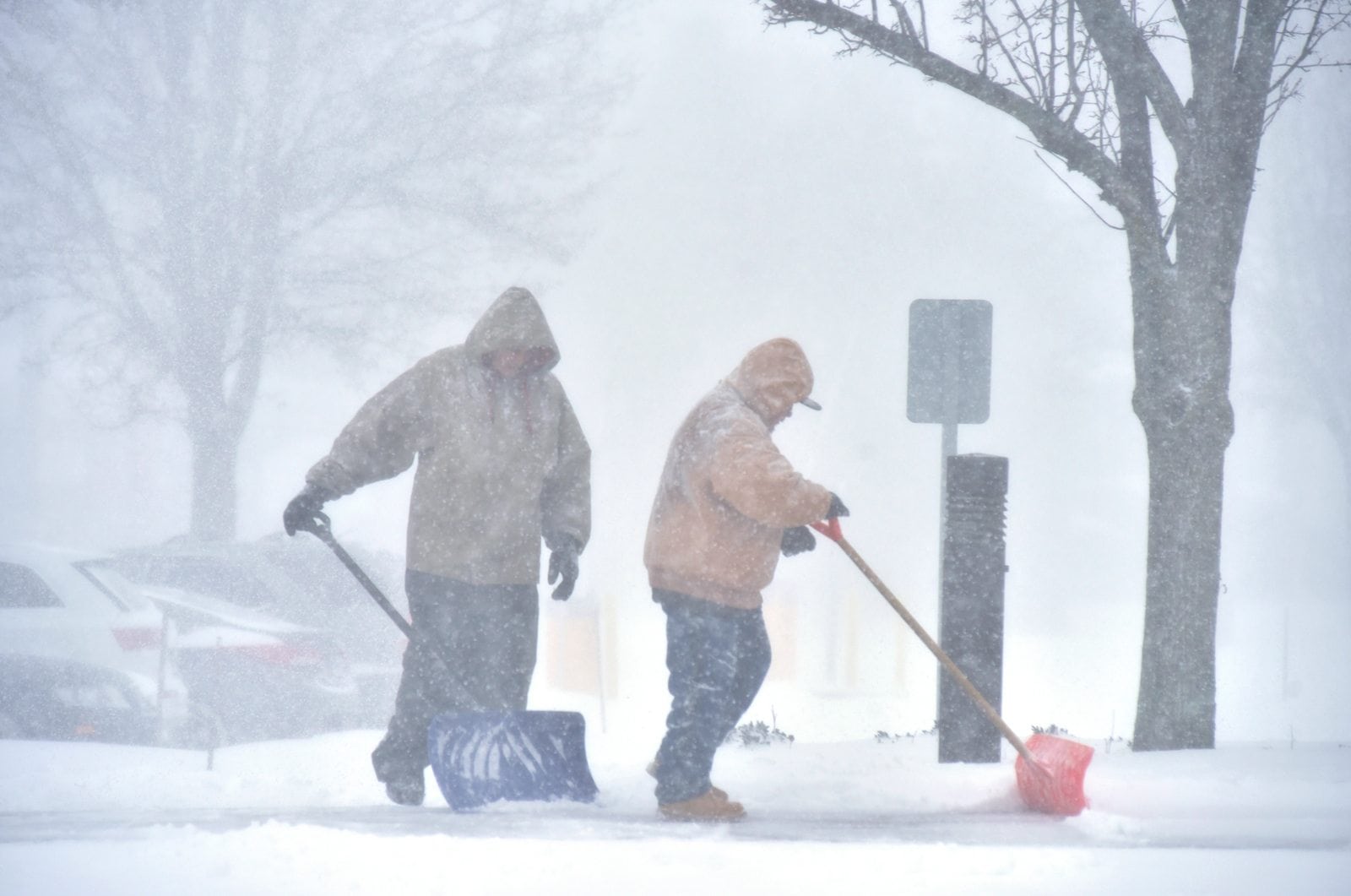It’s bombs away today with one of the most explosive East Coast storms on record that has now qualified as a meteorological phenomenon called a “bomb cyclone.” This storm blew out the standard — a 24-millibar pressure drop in 24 hours — by plunging 59 millibars in the first 24 hours.
The result: Look outside. The storm that dropped snow on every state on the East Coast, from Florida to Maine, has closed Connecticut schools, canceled flights at Bradley International Airport and left travel on the state’s highways to daredevils.
While you wait out the storm, check out these storm clean-up safety tips:
Shoveling Snow
Oh, the agony. And that’s just the thought of bending, lifting and displacing a foot of snow piled onto the driveway, one shovelful at a time.
Look at it as a workout and treat it like one, says the National Safety Council:
- Warm up for 10 minutes with light exercise and stretches.
- Don’t overdo it. Shoveling snow can push your heart rate and blood pressure higher, dramatically.
- Take frequent breaks.
- Drink plenty of fluids.
- Use a shovel suitable for your height and strength. If using a large shovel, fill it no more than halfway.
- Don’t lift the snow. Push it. If lifting, bend your knees and use your legs — don’t bend at the waist — to reduce strain on your back.
- Do not use a twisting motion to throw snow either to the side of over your should. It’s bad for your back.
- Do not shovel while smoking or after eating.
[huge_it_gallery id=”36″]
Health cautions:
- If you have a history of heart trouble, do not shovel snow without your doctor’s approval.
- Be extra careful if you’re over 40 years old. And the same for the resident couch potatoes.
- Don’t knock yourself out. If you run out of breath, pause.
- If you feel chest pain, stop immediately and call 9-1-1.
Using A Snow Blower
Never stick your hands in the snow blower. Common sense, right? A University of Arkansas researcher who studied more than 30,000 snow blower injuries four years ago found a common theme — many people were injured even with the machine powered down. They put a hand in a clogged chute, with some assurance because the snow blower wasn’t running, but when they removed some snow the rotational force of the suddenly freed blades injured the hand.
So:
- If snow jams the snow blower, stop the engine, and use a solid object to clear the chute.
- Never leave a running snow blower unattended
Never add fuel in an enclosed space. - Don’t wear a scarf or other loose clothing that might get caught in the snow blower’s moving parts.
- Use an electronic ignition when possible. Pulling a stuck pull-cord can injure your upper body or back.
- Don’t run the machine in an enclosed area such as a garage or shed. (Gasoline engines release carbon monoxide.)
Carbon Monoxide (CO) Poisoning:
Carbon monoxide is an odorless, colorless gas produced by winter household staples like portable generators, snow blowers and the fireplace, whether fueled by oil, natural gas or wood.
Some basics:
- Make sure the damper is open, ensuring proper ventilation, before using a fireplace.
- Never use a generator in the garage and especially in the home.
- Keep generators at least 20 feet from your home, doors and windows.
- Never heat your home with your oven or stovetop.
- Never use a barbecue grill in the garage.
- Install a CO detector, either battery operated or hardwired with a battery backup, in every sleeping area of your home. Change the batteries every year.
For more tips and up-to-date Hartford HealthCare storm cancellations, click here.

